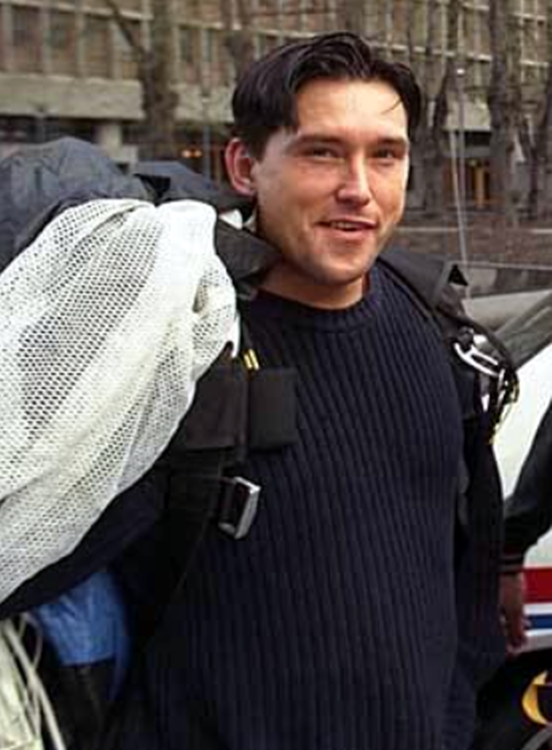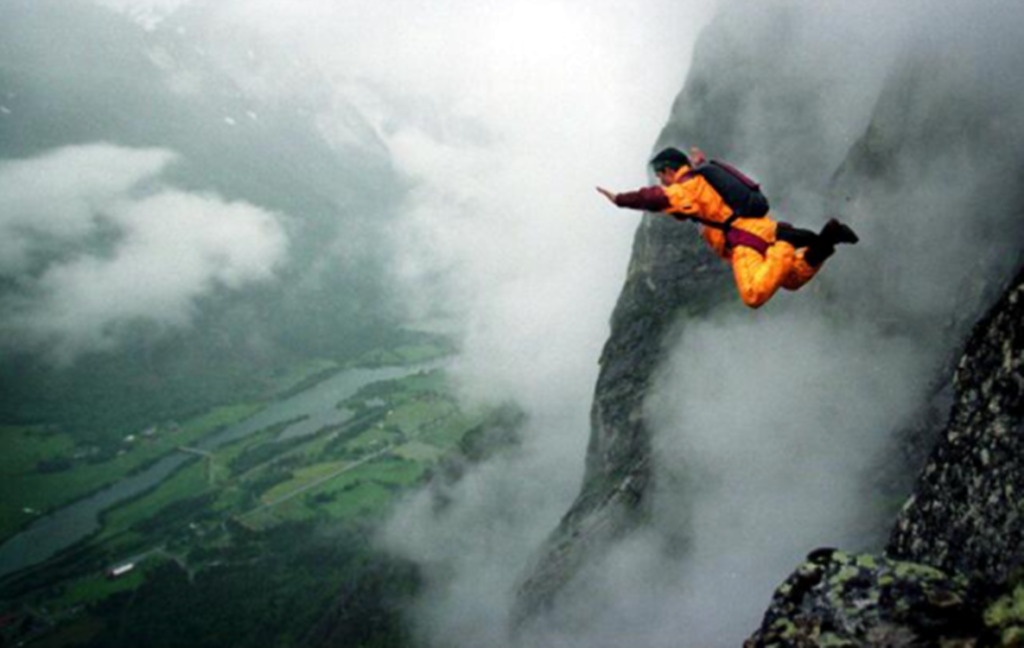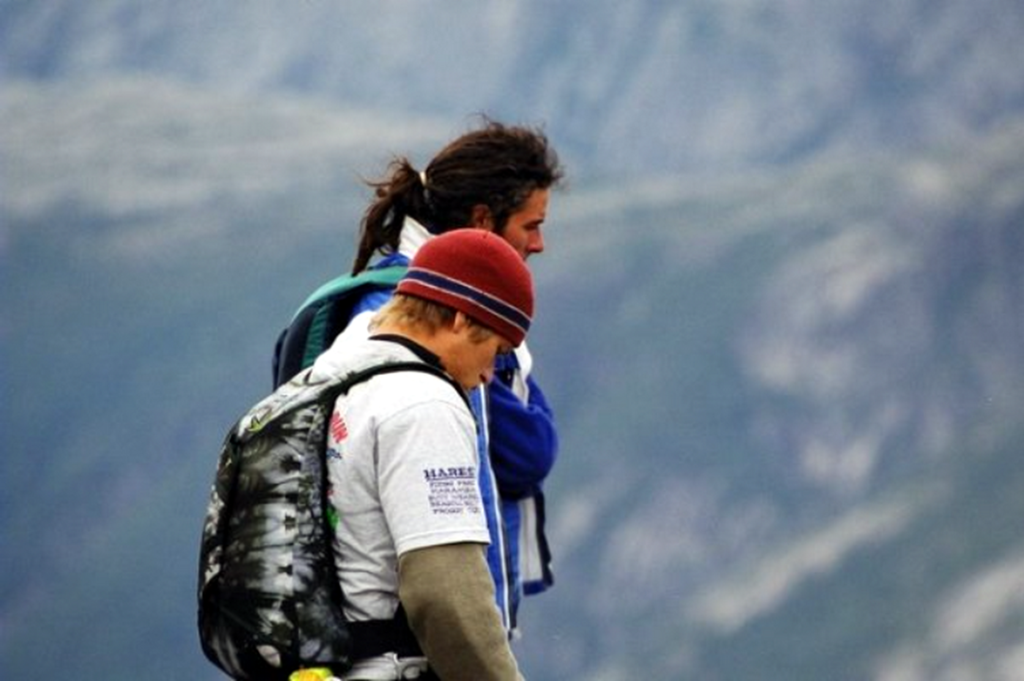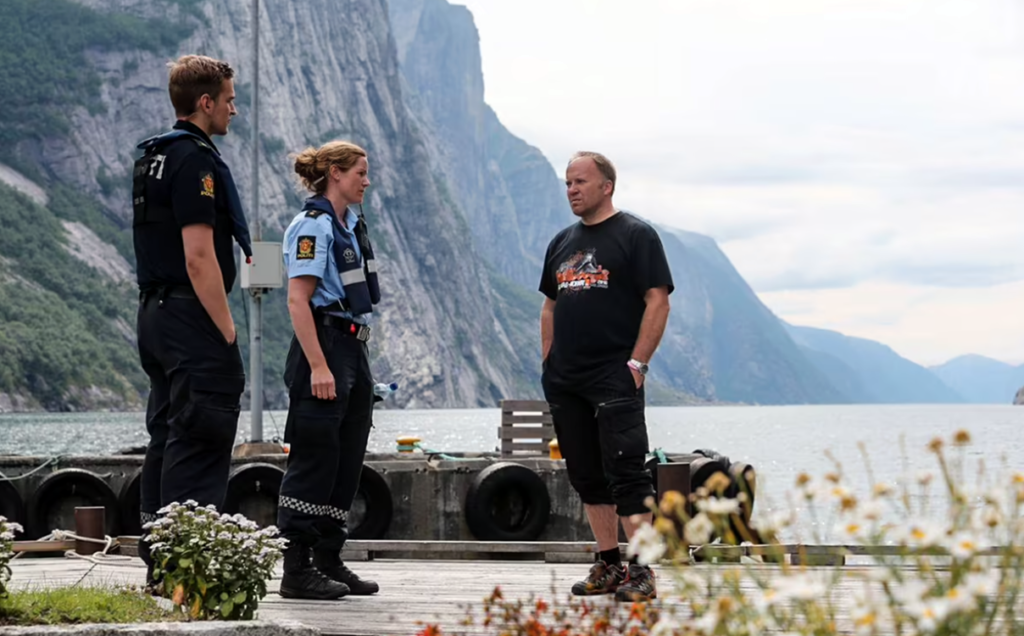
BASE Jumping began for me after I met Tor-Alex Kappfjell (RIP) and Christer Mæland and their group in Thailand in 1997.
We soon became great friends, and they helped me take the giant leap from paragliding, paramotoring, and sky diving, to BASE jumping. After performing jumps in Thailand and Norway, I found myself living in an existential paradox.
Never feeling more alive than during and after each jump outing and having close friends die horribly when their jumps went awry. It was a time of great victories and devastating disasters, an endless cycle of ecstasy and agony. No matter how carefully a jump was prepared and planned for, the ever-present danger made each leap a flirtation with death. After losing too many friends and with a sad heart, I decided in 2002 never to BASE jump again.
About BASE Jumping – Click to Read More
Photo Gallery

Click on the images for a larger view.




































BASE Jumping
“Living at risk is jumping off the cliff and building your wings on the way down.” – Ray Bradbury
The B-A-S-E in BASE jumping
The B-A-S-E in BASE jumping is an acronym for Building-Antenna-Span-Earth. ‘Span’ is typically a bridge and ‘earth’, a cliff. Or, to be more precise, BASE jumping is to leap off anything immovable and high that you aren’t supposed to. Describing what it is, is not difficult; trying to understand why people do it is far more complex.
BASE jumping is statistically the most dangerous of extreme sports. There is no room for error, and there is no reserve parachute. Heights vary, the lowest recorded jump being only twenty-nine-metres off the Christ the Redeemer statue in Rio de Janeiro, to jumps from over seven-thousand-metres off the world’s tallest mountains. Survival requires that the oversized parachute opens and the jumper doesn’t hit anything on the way down. Wind also plays a part in deciding a jumper’s fate.
Some stunts require much more than a strategy of reaching the ground intact. A location may be selected that is illegal to BASE jump from; it is often picked because it is a criminal offence. Landing safely on terra firma, not the final objective, but part of a much bigger game. For an unapproved urban jump to be executed successfully. The publicity-seeking daredevil must make it to the top of the chosen building unseen; reach the pavement unharmed, then hurriedly gather their chute and flee across the city with police in hot pursuit. Urban BASE jumping is clearly not only about physical danger but also about challenging authority.
The greater the physical risk, the bigger the thrill. The spectre of a spectacular death is always in attendance. Getting ever-closer to the fine line between success and disaster is the object of the game. Eventually, some BASE jumpers cross that line. The price of legend is extinction.
Eleven years of data
Eleven years of data from the Kejarag Plateau in Norway concluded that one in every two-hundred-and-fifty-four jumps resulted in non-fatal injuries, and one in every two-thousand-three-hundred-and-seventeen jumps ended in death. The Kejarag Plateau is not the most dangerous location on earth to jump from. Those numbers increase dramatically when new sites are tested and a new world record is attempted.
The introduction of wingsuits has made BASE jumping even more dangerous. Wingsuits were adopted so jumpers could glide and move forward during descent. More exciting but leaves less margin for error. A greater level of danger is seen in the statistics. At some jump sites, the fatality rate for wingsuit descents is one in five hundred. The risk of dying while skydiving is one in one-hundred-thousand. As you can see, there is a vast difference between the two.
What is the attraction? Why do some people feel a compulsion to flirt with death? Ernest Hemingway famously said, “Death is like an old whore in a bar – I’ll buy her a drink, but I won’t go upstairs with her.” Hemingway flirted with death throughout his life but drew the line at cocktails on the ground floor. BASE jumpers will buy the ‘old whore’ dinner, throw in a magnum of Champagne and a bunch of roses, hold hands, go upstairs with her, then leave by jumping out of a third-storey window. Hemingway wanted to look death in the eye, BASE jumpers wish to embrace it. Some even seek to consummate the relationship. Why?
Psychology research has concluded that BASE jumpers test high on the temperament traits of novelty and sensation seeking, and low on harm avoidance – but your hairdresser could have told you that without spending eight to ten years at university.
Most BASE jumpers are male
Most BASE jumpers are male, although not all. This extreme thrill-seeking and confirmation of life through near-death experience is much more prevalent among men. Approximately nine out of ten BASE jumpers are male. Generally, proof of masculinity, then? In the tradition of a medieval trial by combat, perhaps?
Such exploits are an aphrodisiac, too, because a brush with death fuels the libido. BASE jumping may well be the Viagra of outdoor activities. That is something psychology was founded on; that everything was about sex. BASE jump terminology is full of sexual innuendo; ‘penetration’, ‘three-way’, ‘snatch-force’, and ‘head-down’, to name but a few.
On the fringe, there are groupies. Like rock stars, BASE jumpers can find themselves followed by women hungry for vicarious fame, adventure and sexual titillation. Perhaps the explicit terminology is to remind the groupies why they are there.
Sexual rewards
Fame, approval, adrenaline, life-affirmation, rebellion, acceptance, and sexual rewards intensify with increased peril and uncertainty. Like junkies, BASE jumpers feel the need to push a little further; to peer into the abyss for a while. Most stop before they cross over, but some don’t.
We may never be entirely sure why they do it. Searching for a reason is inherently flawed because people typically have several reasons for doing something, not just one. In some cases, it could be all of the above. What is written in this book came from the horse’s mouth, as it were – BASE jumpers’ own words will tell their stories and possibly explain some of the why. Those who crossed over the line cannot be heard from, because they are no longer here to tell their tale; they went into the abyss and took their reasons and memories with them. What compelled them and what befell them has been recreated from the historical record and the reports from eyewitnesses.
Paal S. Dinessen & Harlan Wolff
BASE FATALITY LIST
Click the button below to go to a website listing all the BASE Fatalities, the list can be filtered by clicking the FILTER RECORDS button and making your selection.
Four hundred and fifty-one BASE jumper deaths were registered globally between 1981 and 2021. Twenty-five Norwegian BASE jumpers died between 1999 and 2021. This number is disproportional if one takes into account the population of Norway.